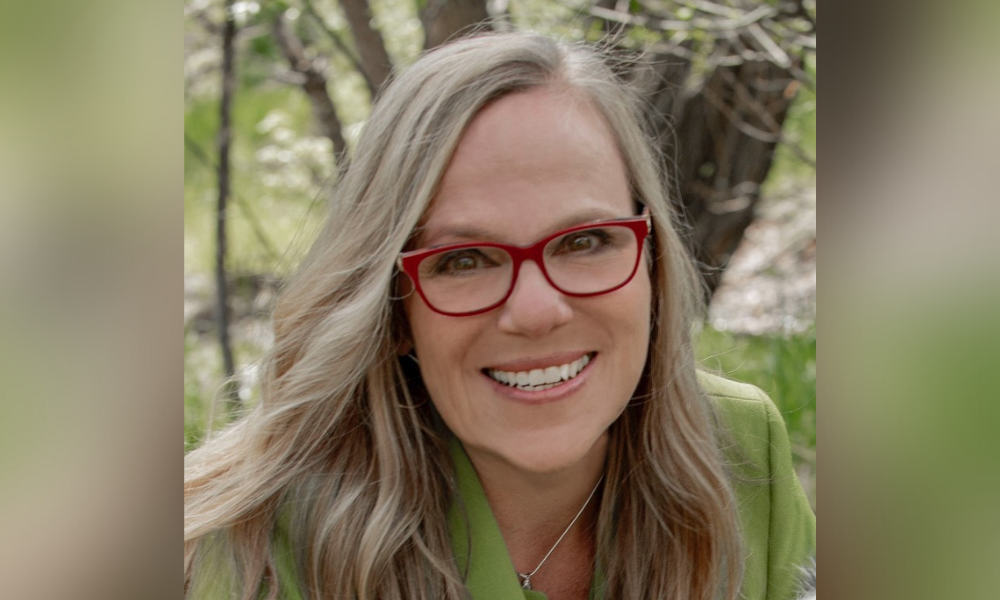
Dr. Sally Spencer-Thomas shares suicide prevention strategies for your workforce

Mental Health Awareness Month may be ending, but HR leaders know their job isn’t.
More than two-thirds (67%) of workers say they experience stress at work at least once a week, up from 62% pre-pandemic, according to recent data from ADP Research Institute. In fact, 15% of workers feel stressed every day. Key sources of stress include length of the working day (28%), problems with technology (26%) and concerns over job security (25%).
White, working-age men with less than a college degree tend are as overwhelmed as everybody else, but they’re more likely to take their own lives due to the pressure, according to Dr. Sally Spencer-Thomas. A clinical psychologist and mental health advocate, she currently serves as president of United Suicide Survivors International and co-chair of the International Association of Suicide Prevention.
It's a cause near and dear to her heart – she lost her brother to suicide in 2004.
“His death rocked my world,” Spencer-Thomas told HRD. “In grief, I went searching for answers and learned the majority of people who die by suicide are just like my brother. They make one attempt and its fatal. Most of those men have never reached out for mental health services.”
Read more: ‘Workplace Doctor’ opens up about suicide attempt, bipolar disorder
The construction industry has one of the highest suicide rates of any industry. In 2016, the suicide rate for men in construction and extraction occupations was almost twice the total suicide rate for civilian working men (16-64 years old) in 32 states and 5 times greater than the rate for all fatal work-related injuries in the construction industry in 2018, according to the Centers for Disease Control and Preventions (CDC). The construction industry has galvanized around that data, seeking solutions for its workforce.
In April, Spencer-Thomas delivered an address at the Construction Industry Roundtable, where a hundred CEOs of the largest construction companies gained insight for developing strategies to protect their employees. She recommended three approaches: upstream, midstream and downstream.
“Upstream focuses on prevention and how to build protective factors,” Spencer-Thomas says. “What does your culture look like? Is it supportive? Do you believe mental health is important?”
Midstream deals with catching things early and making sure there are plenty of opportunities for support – not just an employee assistance program (EAP). “What we are learning in male-dominated industries in particular is that you can shout from the mountain top all day, but it’s a hard sell,” Spencer-Thomas says. “The military has taught us that peer support is the answer. People are much more likely to reach out to a peer, especially someone who has gone through a similar experience.”
In addition to peer support, Spencer-Thomas advises training managers and HR leaders how to properly respond when employees say they’re struggling with mental health. After all, these leaders can either make or break this high-pressure moment. “Too often systems in place rely upon performance improvement plans,” Spencer-Thomas says. “But for someone struggling with anxiety or depression, a performance improvement plan is much more likely to make things worse and cause strain with their supervisor. We need to coach managers how to navigate that carefully and compassionately, while making sure there’s a pathway back to a performance level needed for the job.”
Downstream revolves around having a plan in place for a mental health emergency. It’s better to be proactive than reactive in these delicate situations. “How the workplace responds in the aftermath of a crisis matters greatly for everybody left behind,” Spencer-Thomas says.
Despite the COVID-19 pandemic exacerbating the mental health struggles of every demographic (Gen Z the most), Spencer-Thomas is proud of the progress of her crusade. In 2019, the National Guidelines for Workplace Suicide Prevention were published with hundreds of organizations pledging to follow the standards. The next step is a formal certification program for employers, unions and professional associations on how to implement the guidelines. Spencer-Thomas says the program is piloting in New York in June and then will hopefully scale nationally.
“This has to happen because Gen Zers will demand that we have workplaces that put people ahead of profit,” Spencer-Thomas says. “What makes my heart so happy is when I see these burly men who have been conditioned since birth to be stoic and tough have conversations about empathy and compassion. They’re sharing their own stories about living with depression and anxiety.”